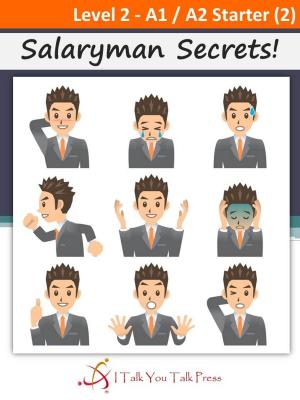| Author: | Remo Nannetti | ISBN: | 9781370760367 |
| Publisher: | Remo Nannetti | Publication: | February 27, 2017 |
| Imprint: | Smashwords Edition | Language: | English |
| Author: | Remo Nannetti |
| ISBN: | 9781370760367 |
| Publisher: | Remo Nannetti |
| Publication: | February 27, 2017 |
| Imprint: | Smashwords Edition |
| Language: | English |
This self-help book is aimed at young people learning any foreign language at any level. It is written in an accessible, readable and non-technical style and shows how to maximise the study of a language by outlining good practice in key areas. The book is structured so that it can be ‘dipped into’ as well as being read from cover to cover. The opening chapter is a review of strengths and weaknesses in language learning and is cross-referenced to the rest of the book, facilitating access to those parts of the text relevant to individual needs. The chapters and their contents are as follows:
1. Explore Your Strengths and Weaknesses: identifying individual strengths and weaknesses, constructing an action plan.
2. Manage Your Mind: target setting, self-confidence, approaching difficulties positively, enjoying one’s learning, communication techniques, reviewing and rewarding progress.
3. Improve Your Learning Experience: pre-class preparation, anticipation of teacher activity, participation, questioning strategies, after-class reviews.
4. Organise Your Work: organisational skills and techniques, forward planning, time management, presentation of work, storage of resources.
5. Listening: types of listening, listening techniques, practising and improving listening skills.
6. Speaking: types of speaking, speaking techniques, practising and improving speaking skills.
7. Reading: text types, reading comprehension, reading techniques, improving and consolidating skills.
8. Writing: types of writing, drafting, reviewing, checking techniques, practising.
9. Using Your Textbook: textbook format, exploitation of textbook resources.
10. Using a Dictionary: choosing a dictionary, dictionary features, accessing dictionaries, advanced dictionary skills.
11. Doing Homework: types of homework, doing and completing homework.
12. Sitting Examinations: preparation, revision, maximising performance.
13. Using Computers: word processing, software, online resources, e-mail.
14. Sound and Vision: audio-visual resources, computer, DVD, radio, CD and MP3.
15. People Power: roles of teachers, fellow students, friends, family, language assistants, tutors, working relationships with these parties.
16. Getting Abroad: language learning abroad, advantages, types of stay, advice during stay.
This self-help book is aimed at young people learning any foreign language at any level. It is written in an accessible, readable and non-technical style and shows how to maximise the study of a language by outlining good practice in key areas. The book is structured so that it can be ‘dipped into’ as well as being read from cover to cover. The opening chapter is a review of strengths and weaknesses in language learning and is cross-referenced to the rest of the book, facilitating access to those parts of the text relevant to individual needs. The chapters and their contents are as follows:
1. Explore Your Strengths and Weaknesses: identifying individual strengths and weaknesses, constructing an action plan.
2. Manage Your Mind: target setting, self-confidence, approaching difficulties positively, enjoying one’s learning, communication techniques, reviewing and rewarding progress.
3. Improve Your Learning Experience: pre-class preparation, anticipation of teacher activity, participation, questioning strategies, after-class reviews.
4. Organise Your Work: organisational skills and techniques, forward planning, time management, presentation of work, storage of resources.
5. Listening: types of listening, listening techniques, practising and improving listening skills.
6. Speaking: types of speaking, speaking techniques, practising and improving speaking skills.
7. Reading: text types, reading comprehension, reading techniques, improving and consolidating skills.
8. Writing: types of writing, drafting, reviewing, checking techniques, practising.
9. Using Your Textbook: textbook format, exploitation of textbook resources.
10. Using a Dictionary: choosing a dictionary, dictionary features, accessing dictionaries, advanced dictionary skills.
11. Doing Homework: types of homework, doing and completing homework.
12. Sitting Examinations: preparation, revision, maximising performance.
13. Using Computers: word processing, software, online resources, e-mail.
14. Sound and Vision: audio-visual resources, computer, DVD, radio, CD and MP3.
15. People Power: roles of teachers, fellow students, friends, family, language assistants, tutors, working relationships with these parties.
16. Getting Abroad: language learning abroad, advantages, types of stay, advice during stay.















